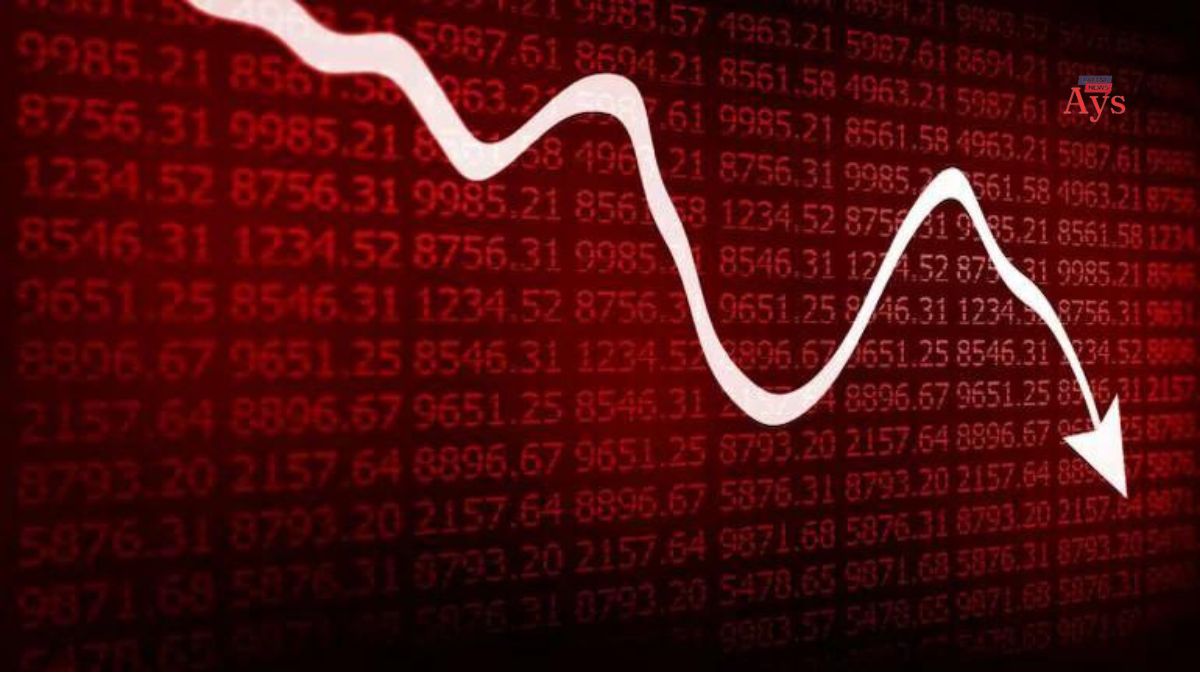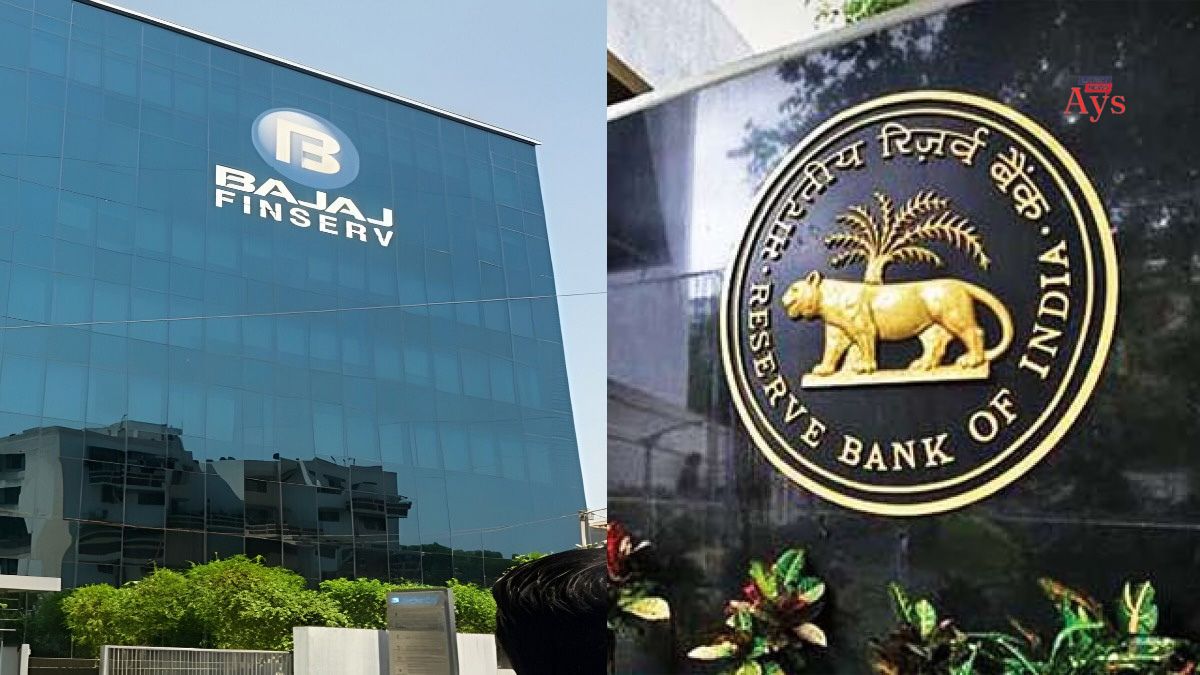Why Bajaj Finance Is Falling
Contents

Bajaj Finance: Hitting a Speed Bump?
Bajaj Finance, a familiar name in the Indian financial sector, has seen its stock price dip recently. But why the sudden drop? Let’s break down the factors that might be influencing this
- Q4 Results: Not Quite Stellar
Bajaj Finance’s Q4 results, while profitable, fell short of investor expectations. The company’s net interest margin (NIM), a key profitability metric, narrowed due to rising funding costs. This means Bajaj Finance is paying more to borrow money, which might affect future profits.
- Shifting Gears: New Products, New Risks?
Bajaj Finance has been venturing into newer loan segments like car and tractor financing. While diversification is good, these markets can be more cyclical (booms and busts) compared to their traditional focus. Investors might be cautious about this shift in strategy. - Management Outlook: Lowering the Bar?
Management’s guidance for the coming year (FY25) is below their usual targets. This includes slower growth, potentially higher loan defaults (credit costs), and lower return on assets (RoA) and return on equity (RoE). This cautious outlook might be dampening investor sentiment.
Is it Time to Panic?
Not necessarily. Bajaj Finance remains a fundamentally strong company with a diversified product portfolio. However, the recent dip reflects a period of adjustment.
Here’s what to keep in mind
- Short-Term vs. Long-Term: The current drop might be a buying opportunity for long-term investors who believe in Bajaj Finance’s future potential.
- Market Conditions: Broader market movements can also impact individual stocks. Keep an eye on the overall market sentiment.
- Do Your Research: Before making any investment decisions, research Bajaj Finance’s future plans, competition, and the overall NBFC (Non-Banking Financial Company) sector.
Vodafone Idea IPO Allotment Date Today
What is the future of Bajaj Finance?

Crystal Ball Not Included: Unveiling Bajaj Finance’s Potential Future
Bajaj Finance, a major player in the Indian financial market, has been grabbing headlines recently, but not necessarily for record-breaking highs. So, what’s on the horizon for this financial giant? Let’s peer into the future, but remember, it’s not an exact science![Why Bajaj Finance Is Falling]
Growth on the Horizon (Maybe Bumpy)
Analysts predict Bajaj Finance will continue to grow, with earnings and revenue rising at a healthy clip. This is good news for investors looking for long-term gains. However, the road might not be entirely smooth. The company’s expansion into new loan areas like car financing could expose them to economic ups and downs.
Digital Domination?
Bajaj Finance has been a leader in the digital lending space. They might push this advantage even further, making the loan process faster and more accessible. This could attract a whole new wave of customers, especially tech-savvy millennials.
The Profitability Puzzle
Rising borrowing costs could squeeze Bajaj Finance’s profits in the near future. How they manage this challenge will be crucial. They might need to find innovative ways to keep their interest rates competitive without sacrificing their bottom line.
The Final Word: A Story Unfolding
The future of Bajaj Finance is a story waiting to be written. While there are potential challenges, their strong foundation and focus on digitalization position them well for continued success. Keep an eye on how they navigate the changing market landscape and their ability to adapt to new opportunities.[Why Bajaj Finance Is Falling]
Linkintime IPO Allotment Status
Is it safe to keep money in Bajaj Finance?
Keeping it Real: Is Bajaj Finance a Safe Haven for Your Cash?
Thinking about parking your money with Bajaj Finance? It’s a wise move to consider safety first. Here’s a breakdown to help you decide[Why Bajaj Finance Is Falling]
The Good Stuff: Safety Seals of Approval
- Top Ratings: Bajaj Finance boasts the highest credit ratings (CRISIL AAA/ STABLE and [ICRA]AAA(Stable)) which signify very low default risk. This means they’re financially strong and likely to repay what you owe them.
- Not a Bank, But Similar Protections: Bajaj Finance is a Non-Banking Financial Company (NBFC). Deposits in NBFCs aren’t directly insured by the government like in banks. However, Bajaj Finance’s strong track record and ratings offer a similar level of security.
Things to Consider: Not Risk-Free
- Market Swings: NBFCs are generally more sensitive to market fluctuations compared to banks. So, there’s a slightly higher chance your investment returns might be impacted by economic conditions.
- The FD Factor: If you’re looking for absolute safety, consider a Fixed Deposit (FD) with Bajaj Finance. FDs offer guaranteed returns and a high degree of security. However, their interest rates might be lower than other investment options.
The Verdict: Safety with a Side of Awareness
Bajaj Finance is a reputable company with a strong financial position. Keeping money with them, especially in FDs, is generally considered safe. However, remember, no investment is completely risk-free.[Why Bajaj Finance Is Falling]
Here are some smart steps
- Match your needs: Are you prioritizing guaranteed returns (FD) or potentially higher returns with a bit more risk (other investment options)?
- Diversify: Don’t put all your eggs in one basket. Consider spreading your investments across different options.
- Stay informed: Keep an eye on Bajaj Finance’s performance and the overall market conditions.
India Forex Reserves $1 Trillion
Is Bajaj Finance controlled by RBI?

Bajaj Finance: Who’s at the Wheel? (It’s Not Exactly the RBI)
Bajaj Finance is a big name in India, offering loans and other financial services. But who calls the shots? While the Reserve Bank of India (RBI) plays a crucial role, Bajaj Finance isn’t exactly under their direct control. Here’s the breakdown [Why Bajaj Finance Is Falling]
The RBI: The Big Picture Regulator
Think of the RBI as the umpire of the Indian financial game. They set the rules, ensure fair play, and keep an eye on everyone. Bajaj Finance, like all Non-Banking Financial Companies (NBFCs), has to follow the RBI’s guidelines. This includes things like capital requirements, interest rate caps, and how they handle customer complaints.
Bajaj Finance: Steering Their Own Ship
While the RBI sets the course, Bajaj Finance has its own captain and crew. They make decisions about the day-to-day operations, what loan products to offer, and how to run the business profitably. So, Bajaj Finance has the freedom to innovate and grow within the boundaries set by the RBI.
Think of it This Way
Imagine Bajaj Finance as a car. The RBI sets the traffic rules and makes sure the car is roadworthy. But Bajaj Finance gets to decide where to drive, how fast to go, and what kind of music to play (as long as it’s not too loud!)[Why Bajaj Finance Is Falling]
Is Bajaj Finance debt free company?
Buckle Up! Debunking the Debt Myth: Is Bajaj Finance Debt-Free?
Bajaj Finance, a prominent name in Indian finance, might have you wondering – are they swimming in debt or debt-free? Buckle up, because the answer is a bit more nuanced!
Here’s the Straight Story
Bajaj Finance is definitely not a debt-free company. In fact, it operates with a significant amount of debt. This is typical for Non-Banking Financial Companies (NBFCs) like Bajaj Finance. They use debt to fund their lending activities, so they can offer loans to customers.
Think of it Like This
Imagine Bajaj Finance as a library. They need books (money) to lend out to their patrons (borrowers). To get those books, they borrow money from others (banks and investors). This debt allows them to offer a wider selection of books (loans) to more people.[Why Bajaj Finance Is Falling]
The Key is Managing the Debt
While debt is a reality, Bajaj Finance manages it strategically. Here’s what matters
- Debt-to-Equity Ratio: This ratio compares Bajaj Finance’s debt to its own money (equity). A lower ratio is generally better, and Bajaj Finance’s ratio has been improving in recent years, showing responsible debt management.
- Profitability: As long as Bajaj Finance makes enough profit to cover its debt payments and operating costs, the debt is manageable.
Final TakeAway:
So, there you have it! We’ve steered you through the world of Bajaj Finance, from its debt management to its future prospects. Remember, the financial world can be a bit bumpy, but with a little research and understanding, you can make informed decisions. And who knows, maybe Bajaj Finance will be a part of your own financial journey![Why Bajaj Finance Is Falling]

